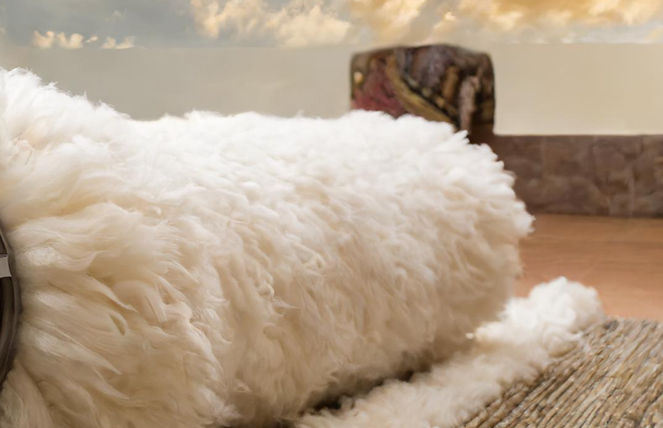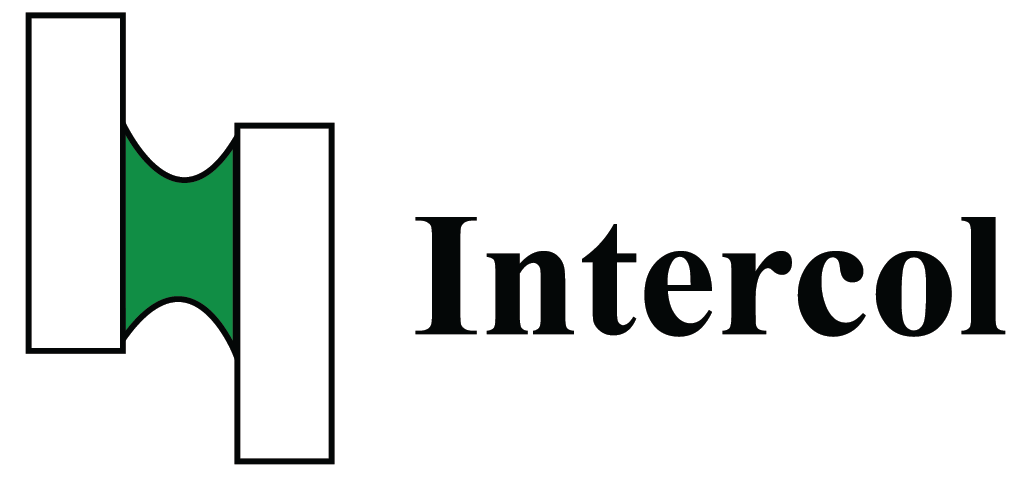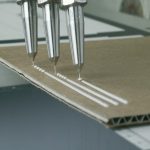Intercol has various compounds to coat carpets after these are being tufted. Especially our VAE compounds support the quality of carpets
- Good mechanical and adhesion properties to many fibers
- High compatible with many used thermoplastic yarns and fibers. VAE as itself is often supplied as a dispersion, after drying, the film is a thermoplast VAE film.
- VAE is solluble in alkaline water or mild solvents, supporting seperation and recycling of carpet
- VAE can be stabilised with several surfactants, but it can also be supplied in dry powder form
- VAE is used in many high filled compounds for carpet already.
- having very low VOC, supporting a healthy indoor environment
- supporting low flammable carpets, supporting indoor and outdoor safety (e.g. for artificial grass, that can be seen as “exterior carpet”)
Carpet Tufting
Carpet tufting is a process that transforms yarn into plush, durable carpets.
- Origins and Craftsmanship:
- The term “tufting” traces its roots to old European craftsmanship, where artisans embroidered rugs with decorative tufts.
- In modern tufting, a needle punches through a backing material, creating loops. These loops add texture and dimension to the fabric.
- If the loops are cut, it results in a “cut pile,” resembling a velvet-like surface.
- Process:
- A tufting machine (or tufting gun) plays a pivotal role. It rapidly inserts yarn into the fabric, securing it in place.
- Tufting allows diverse designs and textures, making it a versatile choice for carpets.
- Colors and patterns can be applied through piece dyeing, spinneret dyeing, or printing on off-white carpets.
- Types of Carpet Tufting:
- Broadloom Carpet: Continuous rolls of tufted carpet suitable for large areas.
- Modular Tiles: Smaller tufted carpet squares, convenient for specific placements.
- Fiber Types:
- Natural Fibers: Derived from nature (e.g., wool, cotton).
- Synthetic Fibers: Man-made (e.g., nylon, polyester, polypropylene).
- Applications:
- Commercial Spaces: Offices, hotels, and public areas benefit from tufted carpets.
- Residential Use: Tufted carpets adorn homes, providing comfort and style.
- Mannington’s Role:
- Mannington, with decades of experience, has been a key player in tufting carpet.
- Their commitment to quality ensures carpets that perform well, look great, and last for years.
In summary, tufting combines craftsmanship, technology, and creativity to weave beautiful carpets that enhance our spaces.

Backing coating of carpets
The backing of a carpet plays a crucial role in its overall performance and durability.
- Securing Tufts and Strength: The underside of a carpet, also known as the backing, serves to secure the tufts (the individual yarn strands) in place. It provides additional strength and dimensional stability to the carpet. Most carpets have two layers of backing:
- Primary Backing: This is where the yarn is tufted into during the manufacturing process.
- Secondary Backing: The outer material that adds further support and stability.
- Types of Carpet Backing:
- Standard Backing:
- Made from natural jute fiber or synthetic polypropylene.
- Available in woven and non-woven constructions.
- Lightweight and mildew-resistant.
- Ideally suited for low-traffic settings in residential applications.
- Performance Backing:
- Offers higher dimensional stability and strength compared to standard backing.
- Stops zippering (when the edges unravel) and provides better tuft bind properties.
- Recommended for commercial environments and high-traffic areas.
- Used in direct glue installations.
- Enhanced warranties.
- High Performance Backing:
- Usually unitary (a heavy coating directly applied to the carpet’s back).
- Designed for demanding commercial environments.
- Provides long-term durability and protects against stains, spills, and moisture.
- Extra dense latex prevents moisture penetration beneath the backing.
- Ideal for high-traffic areas and glue-down installations.
- Standard Backing:
- Considerations:
- Environment: Choose the backing based on the type of environment where the carpet will be installed.
- Traffic: Assess the degree of traffic and wear and tear.
- Moisture and Stain Resistance: Determine if moisture-resistance and stain-resistance are important.
The backing is an important part of the carpet, ensuring comfort, longevity, and performance.




